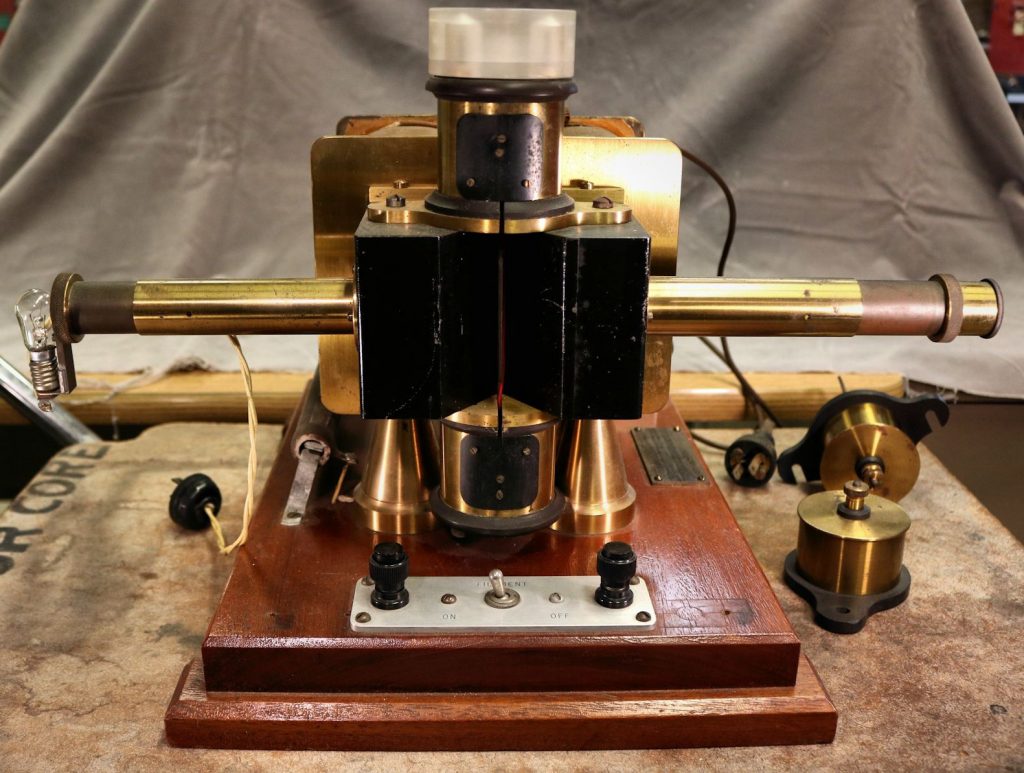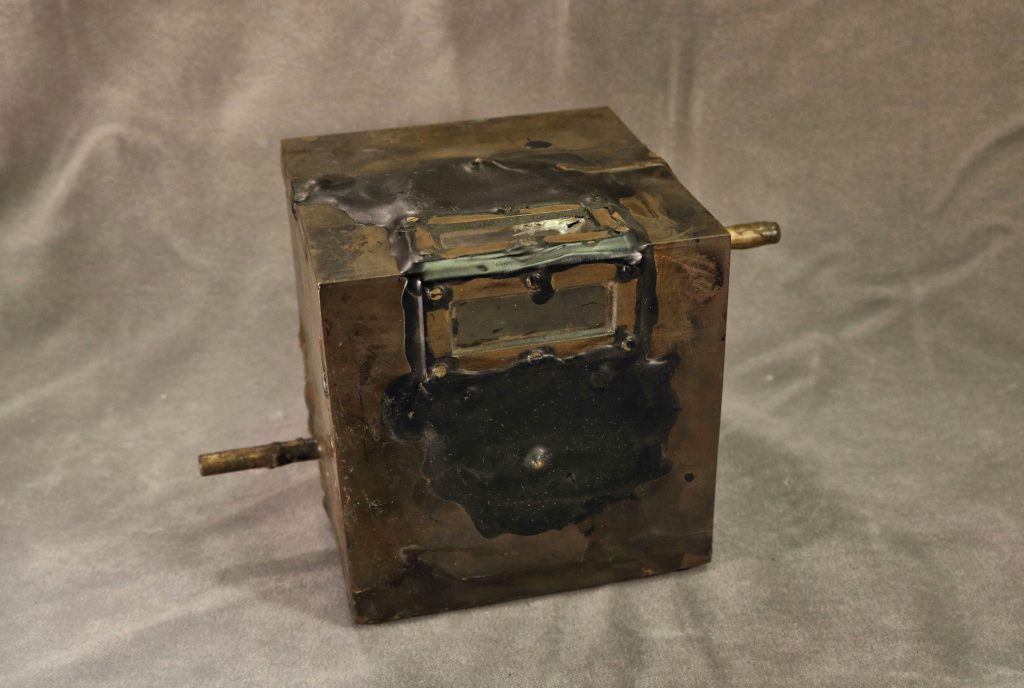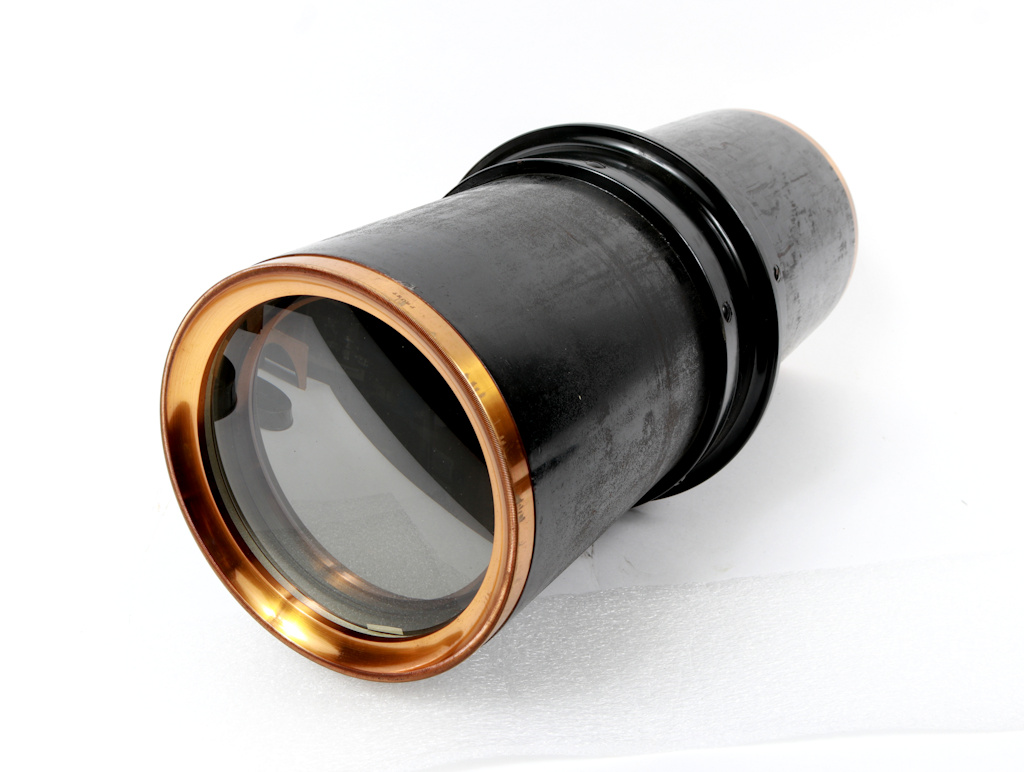This year, the David Dunlap Observatory (DDO), a historic observatory in and run by the city of Richmond Hill, celebrates its 90th Anniversary! On the weekend of May 31st and June 1st, 90 years to the day of its opening, the observatory celebrated with a special event featuring a cake displays from the two groups that run programming at the observatory, the Royal Astronomical Society of Canada – Toronto Centre and the David Dunlap Observatory Defenders.

To celebrate the anniversary, I created a exhibit of objects in the observatory’s stunning library. The items on display were all either used at the observatory or connected to people who worked there, and drawn from the David A. Dunlap Department of Astronomy and Astrophysics’ historic collections, which I curate.
This was an amazing opportunity. Many of the artifacts were originally used at the DDO or even designed for it–this includes the “Newtonian Breechpiece” that held photographic plates for the observatory’s huge 74-inch telescope. Other items related to work of the observatory’s researchers, such as the light table that belonged to Helen Sawyer Hogg, a prominent researcher in the field of variable stars who worked at the DDO for decades and took hundreds of photographs she would have viewed with this table. While I use objects from the collection for teaching and pop-up exhibits, this is the first time I have been able to bring them out for an extended display where they can be examined by visitors. I was so excited to get this chance.
Over the anniversary weekend, I was on hand with a colleague, chatting with visitors about the artifacts and the observatory’s history, something I always love to do. Although I can’t be there all summer, and some items had to return to storage for one reason or another, most of the objects are remaining on display all summer for the observatory’s highly popular “Tour the DDO” events, free to the public.
At the birthday even on May 31st, I was invited to speak about Clarence Augustus Chant, a professor at the University of Toronto from whose efforts the observatory came about. This story is a fantastic one, as it highlights a fascinating period in Canadian science at the beginning of the 20th century when the country was just beginning to develop a scientific research identity.

Initially a physics professor, Chant taught the first astronomy classes at U of T in 1905. Keen to develop the program’s capacity and impressed by the importance of scientific public education and amateur access to science, he had a vision that not only should the university have its own large telescope for teaching and research, but also that the city of Toronto should have access to a major observatory so that the public could come and learn something about the universe. This “observatory for Toronto”, as Chant called it, opened on Chant’s 70th birthday, May 31st, in 1935, and hosted what was then the world’s second biggest telescope as well as three others. It spent many decades at the heart of the university’s astronomical research program as well as delighting a steady stream of interested members of the public.
In 2007, the University of Toronto sold the observatory. Through the efforts of the City of Richmond Hill and groups of local people determined to maintain the observatory and its surroundings as a historic site and park, it became a National Historic Site in 2019, and still welcomes thousands of visitors a year.
Chant’s legacy is one I’m glad to celebrate, because it still resonates so strongly today. Not only did he believe that Canadian astronomers should have access to high quality research facilities at a time when Canada, but–perhaps even more importantly in the emergence of scientific research and industry in Canada–that science and science education should be accessible to the broader public. As we face a bewildering array of crises and problems that connect with science, industry, and technology, this access, for adults as well as kids, is perhaps more important than ever before.

I was so excited to include some elements of the DDO’s public education history in the exhibit: Chant’s educational lantern slide set designed to assist in teaching adults and children about astronomy, and a faux “Oscar” statuette featuring an astronaut jokingly awarded to professor Donald MacRae by his department colleagues for his “starring role” in the 1960 documentary, Universe, partly filmed at the DDO.
The exhibit was visible from June to October 2025. In November 2025, a few items went on display at Gerstein Library at the University of Toronto’s St. George Campus.







Recent Comments